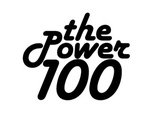 Next stop: Baku? The capital of Azerbaijan wants to join the contemporary art-circuit, and it has apparently convinced former Guggenheim Museum director Tom Krens (left) that its bid is serious. Krens, still an advisor to the Guggenheim’s Abu Dhabi project, has been counseling the Azerbaijani government through his consulting form, Global Cultural Asset Management (GCAM). His job: make it happen.
Next stop: Baku? The capital of Azerbaijan wants to join the contemporary art-circuit, and it has apparently convinced former Guggenheim Museum director Tom Krens (left) that its bid is serious. Krens, still an advisor to the Guggenheim’s Abu Dhabi project, has been counseling the Azerbaijani government through his consulting form, Global Cultural Asset Management (GCAM). His job: make it happen.
ARTnews has the story on its website.
The envisioned museum, designed by Jean Nouvel and approved by the government of President Ilham Aliyev, would attempt to make Baku another Bilbao. The article says:
The contemporary-art museum is one of several museum projects that President Aliyev signed into being with a decree several years ago, among them a museum of independence, a museum of oil, and the renovations of the museum of carpets and the museum of visual arts–all with the strong backing of First Lady Mehriban Aliyeva. The decree stipulated a “new approach” to the activities of the country’s museums according to “international standards” of museum practice, as well as to “Azerbaijan national ideology.” Last spring, the first couple, along with Unesco director-general Koïchiro Matsuura, opened a provisional contemporary-art museum with a collection of more than 800 works by local artists. At the same time, Matsuura presented Azerbaijani artist Tahir Salahov with Unesco’s Picasso Medal for his cultural achievements.
ARTnews did not gain an interview with Krens but, drawing on information in an online journal called agitarch and other sources, says that Krens would also be involved in a master plan for the city. Costs, financing and other details have not been determined.
Stranger things have happened in the art world, but Baku seems like a long shot to me.

 In early September, I visited the
In early September, I visited the 
 is
is Let me say from the outset that I’m not against reinterpretations, as long as they are tasteful and respect/enhance the music/libretto. I take issue with Bondy’s blame-the-audience response. Despite negative reaction from both audience members and from respected critics (many of whom disliked the production and could hardly be viewed as reactionary), Bondy’s public response was “I was scandalized that they were so scandalized. I didn’t know that ‘Tosca’ was like the Bible in New York.” He simply refused to countenance that he had laid an egg, to use Variety-talk.
Let me say from the outset that I’m not against reinterpretations, as long as they are tasteful and respect/enhance the music/libretto. I take issue with Bondy’s blame-the-audience response. Despite negative reaction from both audience members and from respected critics (many of whom disliked the production and could hardly be viewed as reactionary), Bondy’s public response was “I was scandalized that they were so scandalized. I didn’t know that ‘Tosca’ was like the Bible in New York.” He simply refused to countenance that he had laid an egg, to use Variety-talk.